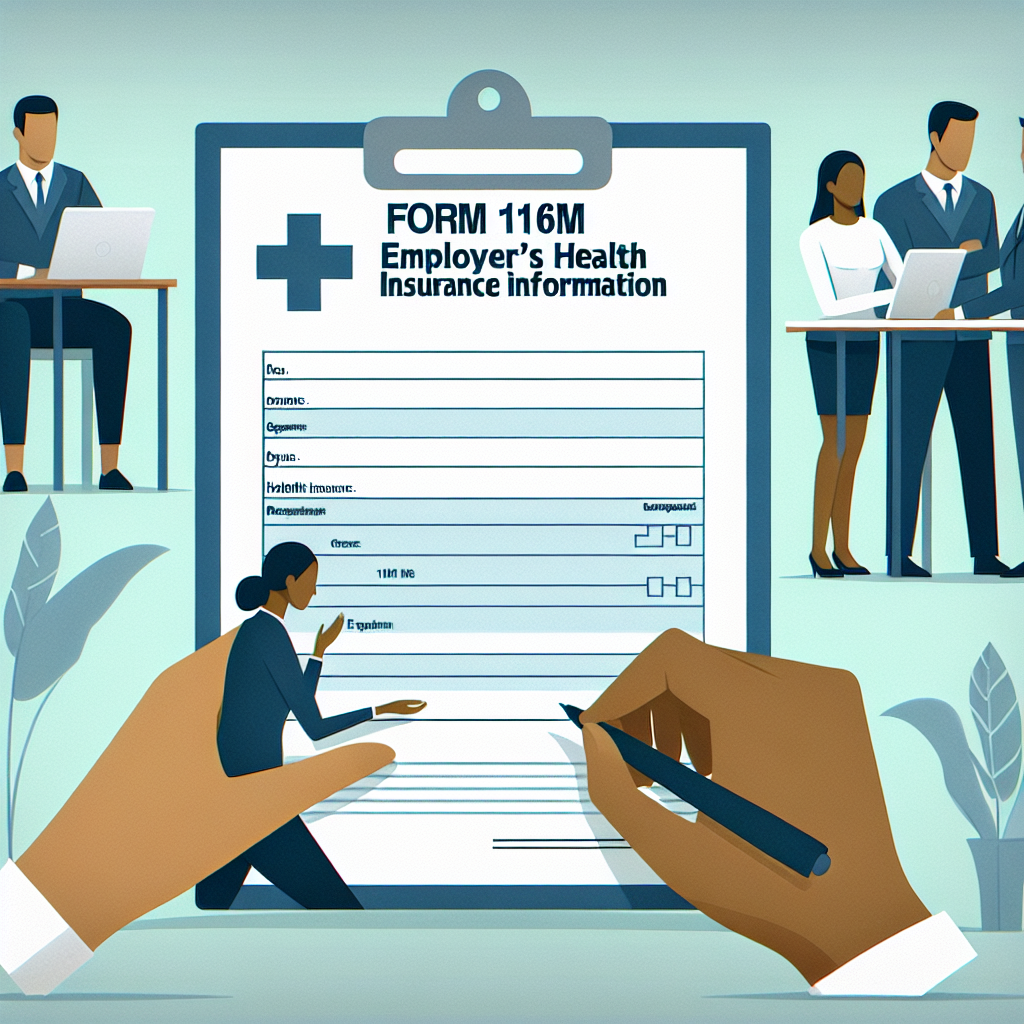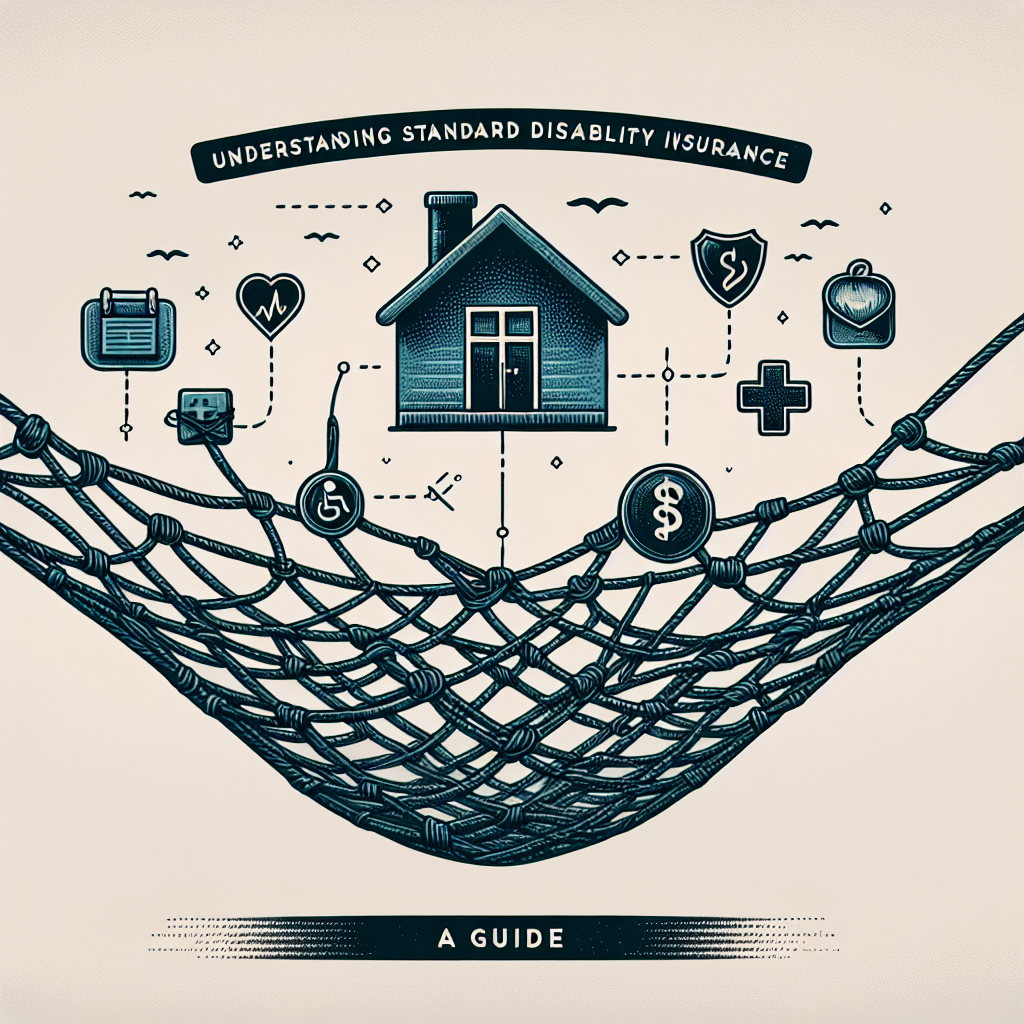Filed under Health Insurance on
Understanding Form 116M: Employer Health Insurance Guide

Understanding Form 116M can play a crucial role for employers navigating the complex landscape of health insurance. This guide is essential for any business, large or small, aiming to adhere to regulations and provide optimal health benefits to their employees. Being informed about Form 116M helps companies manage costs while ensuring compliance, ultimately supporting a healthy, satisfied workforce. In this article, we’ll delve into the nuances of Form 116M, offering practical advice, real-life examples, and answers to frequently asked questions.
What is Form 116M?
Form 116M, often referred to as the Employer Health Insurance Guide, is a document that assists employers in understanding and implementing health insurance options for their staff. Whether you're offering coverage for the first time or adjusting existing plans, Form 116M provides critical guidance to ensure all regulatory requirements are met, from the Affordable Care Act (ACA) mandates to state-specific rules.
The Importance of Offering Health Insurance
Offering health insurance is a valuable component of any employee benefits package. It not only attracts top talent but also retains current employees by demonstrating the company's commitment to their wellbeing. Health insurance can reduce absenteeism, increase productivity, and enhance job satisfaction.
- Attracting Talent: In a competitive job market, companies with robust health benefits often have an edge.
- Maintaining Morale: Employees who feel valued are more likely to be engaged and productive.
- Financial Security: Providing health insurance helps employees avoid financial burdens due to medical costs.
The Components of Form 116M
Form 116M is typically structured into several sections, each providing essential information for employers:
1. Insurance Plan Options
This section outlines the types of health insurance plans available, such as Health Maintenance Organization (HMO), Preferred Provider Organization (PPO), and High-Deductible Health Plans (HDHP). Depending on the size and needs of your organization, one option may be more suitable than others.
For instance, a tech startup prioritizing flexibility might opt for PPOs, allowing employees to choose their healthcare providers. Conversely, an established manufacturing firm might lean towards HMOs to maintain lower costs.
2. Compliance and Legal Requirements
Adhering to legal and regulatory requirements is crucial. This section of Form 116M covers regulations like the ACA, which mandates that businesses with 50 or more full-time employees provide health insurance that meets minimum standards of coverage and affordability. Failure to comply can result in significant penalties.
3. Enrollment Periods and Employee Eligibility
Understanding when and how employees can enroll in health plans is essential. The form provides guidelines on open enrollment periods, qualifying events (like marriage or the birth of a child), and eligibility criteria.
For example, a retailer experiencing seasonal employment shifts may need to adjust their offerings based on part-time versus full-time status.
Practical Advice for Implementing Form 116M
Successfully implementing Form 116M requires strategic planning and careful consideration of your organization’s unique needs.
1. Assess Employee Needs
Start by understanding your workforce’s health insurance preferences and requirements. Conduct surveys or face-to-face meetings to gather input. This feedback is invaluable in tailoring benefits packages to what your employees value most.
2. Balance Cost and Coverage
Employers must strike a balance between offering comprehensive coverage and managing costs. Consider working with a broker who can help you navigate the insurance market and identify plans that align with your budget while fulfilling employee needs.
3. Educate Your Employees
Educate your employees about their health insurance options. Clear communication about plan details, deductibles, copayments, and out-of-pocket costs is vital to ensuring they fully understand their benefits and use them effectively.
4. Leverage Technology
Utilize HR technology platforms to manage enrollment, track compliance, and streamline communication. These tools can simplify administrative tasks and offer employees easy access to information and resources.
Real-Life Examples
Let’s look at how two different companies have navigated Form 116M:
Example 1: TechCorp Inc.
When TechCorp Inc., a midsize technology company, decided to enhance its benefits package, they turned to Form 116M for guidance. They conducted an employee survey and discovered that flexibility and a wide network of providers were top priorities. As a result, TechCorp chose a PPO plan and implemented an online portal where employees could access webinars and FAQs about their health insurance options. This move not only increased employee satisfaction but also improved TechCorp's reputation as an employee-centric organization.
Example 2: Family Groceries LLC
Family Groceries LLC, a small grocery store chain, needed to offer quality benefits while keeping costs manageable. By utilizing the guidelines within Form 116M, they selected an HMO plan that provided excellent local coverage at a competitive rate. They focused on educating their staff with newsletters and sessions during team meetings. As a result, employee retention improved, as did the overall morale within the company.
Frequently Asked Questions
To further assist employers, here are five commonly asked questions about Form 116M, along with answers:
1. What happens if my business does not comply with Form 116M requirements?
Non-compliance with health insurance guidelines can result in penalties and fines, particularly if your business is subject to the ACA provisions. It's crucial to stay informed and follow the guidelines to avoid these financial repercussions.
2. Can part-time employees be offered health insurance through Form 116M?
Yes, although it's not mandated by law for part-time employees, many companies offer pro-rated benefits as a competitive perk. Form 116M helps define eligibility and plan options for incorporating part-time staff.
3. How often should I review and update my company’s health insurance options?
Regular review is advisable, typically annually during the open enrollment period. Any significant changes in workforce or regulations should prompt a reevaluation of your insurance offerings to ensure they remain competitive and compliant.
4. What resources are available if I need assistance understanding Form 116M?
Consider consulting with HR professionals, insurance brokers, or legal advisors who specialize in health benefits to fully understand and implement Form 116M. Many online resources and workshops also provide education on health insurance compliance.
5. How can I effectively communicate health insurance changes to my employees?
Clear and consistent communication is key. Use a combination of emails, informational sessions, and online portals to ensure employees are aware of their options and any changes to their health insurance plans. Providing a contact for questions is also beneficial.
In conclusion, Form 116M is a comprehensive tool for employers seeking to offer robust health insurance benefits while maintaining compliance with the law. By understanding its components and utilizing strategic planning, companies can effectively support their employees' health and satisfaction, ultimately contributing to a thriving workplace.





